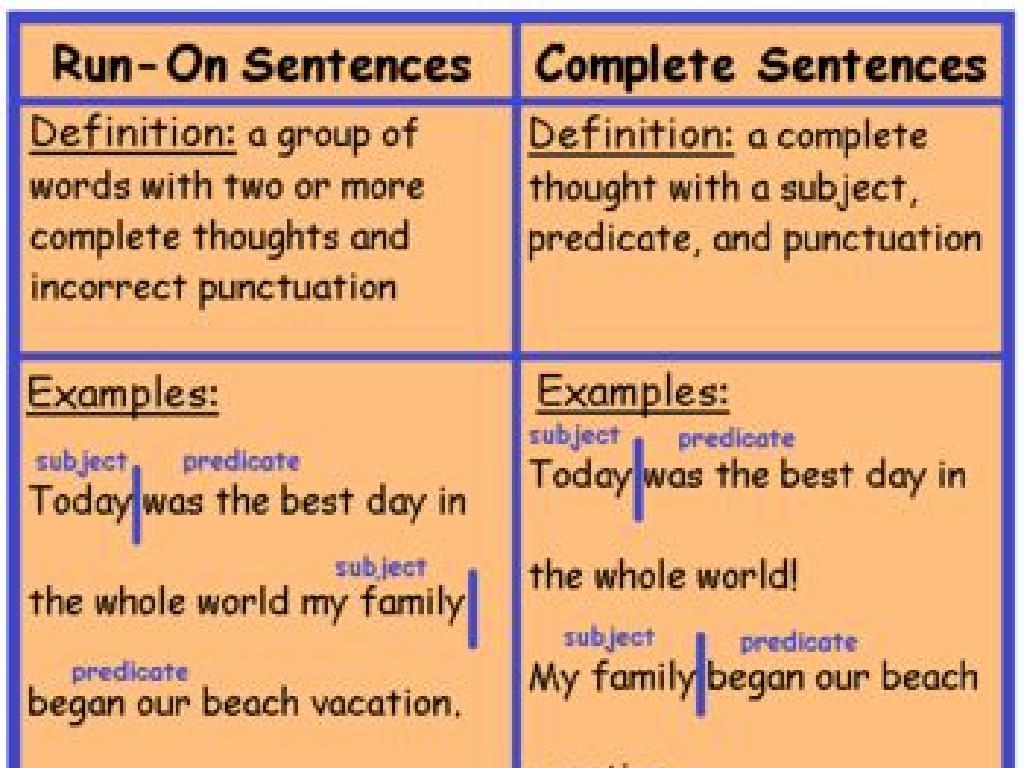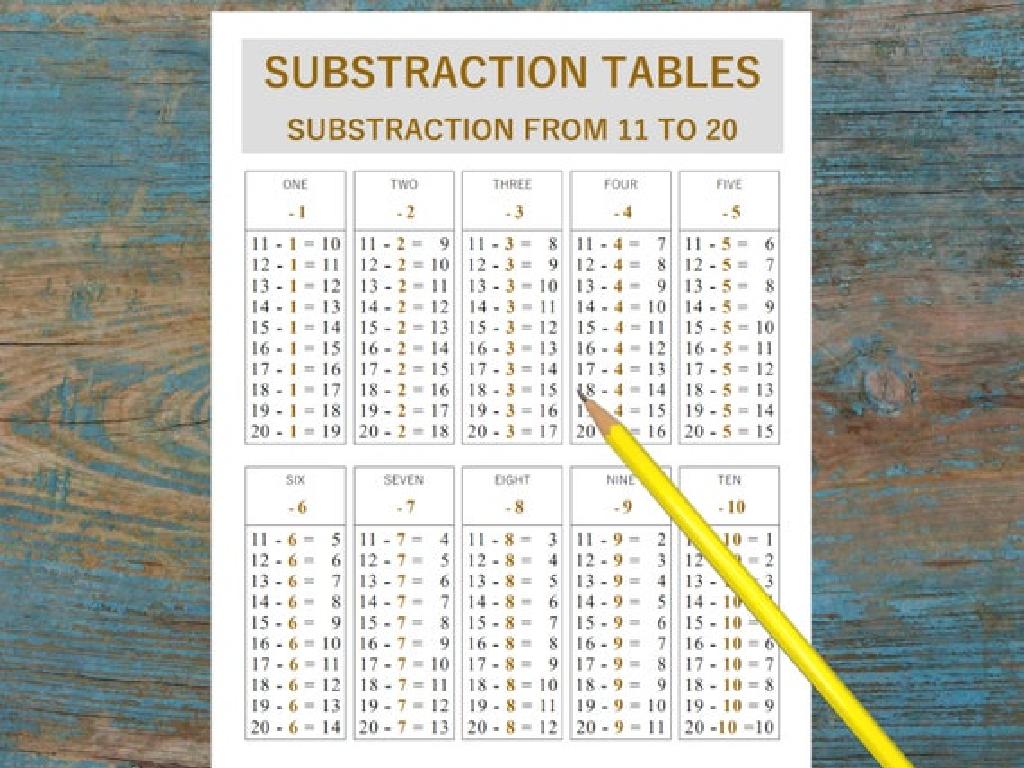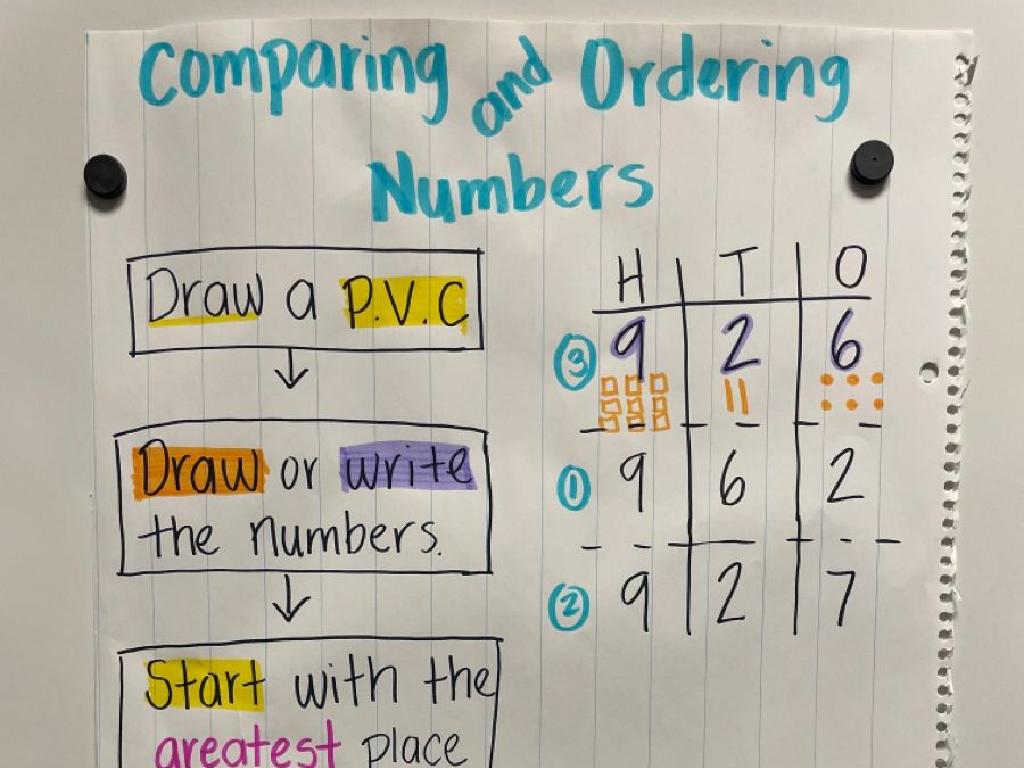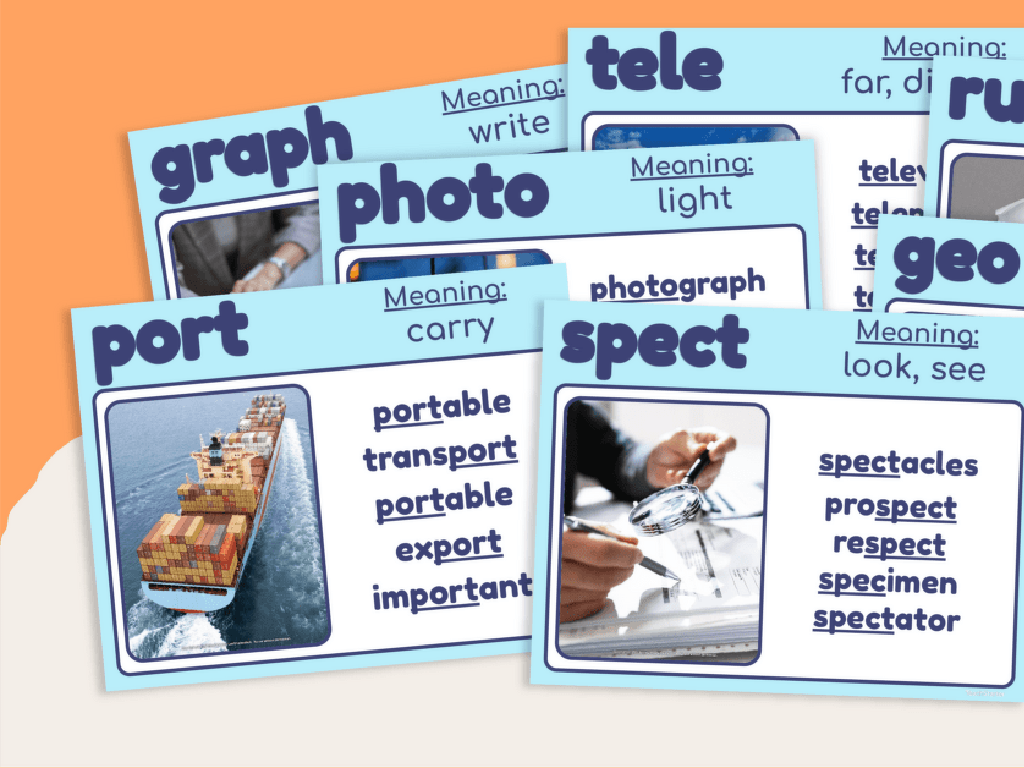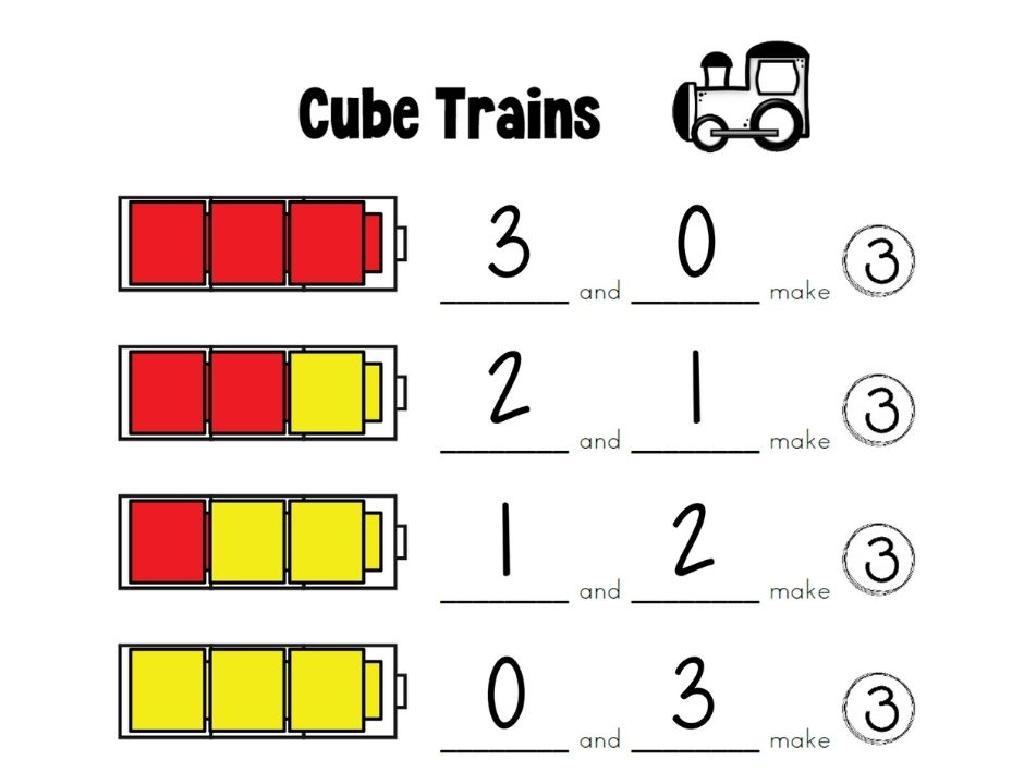Identify Supporting Details In Informational Texts
Subject: Language arts
Grade: Eighth grade
Topic: Persuasive And Opinion Writing
Please LOG IN to download the presentation. Access is available to registered users only.
View More Content
The Power of Supporting Details in Persuasive Writing
– Understanding persuasive writing
– Persuasive writing aims to convince readers of a viewpoint.
– Today’s focus: Supporting details
– We’ll learn how to spot details that back up main ideas.
– The role of supporting details
– These details are evidence that strengthen arguments.
– Why details matter in persuasion
– Strong details make your writing more convincing to readers.
|
This slide introduces the concept of persuasive writing and its reliance on strong supporting details. Begin by explaining that persuasive writing is all about presenting a case to influence the reader’s opinion or actions. Emphasize the importance of identifying supporting details in informational texts, as these details serve as the backbone of a convincing argument. Discuss how these details provide evidence and credibility to the writer’s claims, making the argument more compelling. Encourage students to think critically about the quality and relevance of supporting details when reading persuasive texts. Use examples from familiar texts to illustrate how supporting details function within an argument. The goal is for students to understand that without solid evidence, persuasive writing loses its impact.
Exploring Persuasive Writing
– Define persuasive writing
A form of writing aiming to convince readers to agree with the author’s point of view.
– Understand persuasion goals
– Identify everyday examples
Advertisements, speeches, opinion articles are common forms.
– Analyze persuasive techniques
Look at how writers use emotional appeal, facts, and logic to persuade.
|
This slide introduces students to the concept of persuasive writing, a key component of opinion writing. Persuasive writing is used to convince the reader to accept a particular viewpoint or take a specific action. The goal of persuasion is to influence the reader’s thoughts or actions. Provide students with relatable examples such as advertisements they see, speeches they hear, or opinion pieces in newspapers. Discuss how these writings use various techniques to persuade, including the appeal to emotions, the use of credible facts, and logical reasoning. Encourage students to think critically about the persuasive texts they encounter and to consider the effectiveness of different persuasive strategies.
The Power of Supporting Details
– Definition of supporting details
– They are pieces of information that elaborate on the main idea
– Types: Facts, stats, examples, anecdotes
– Facts: true statements; Statistics: numerical data; Examples: specific cases; Anecdotes: short, personal stories
– Role in strengthening arguments
– They provide evidence to persuade or inform, making arguments more convincing
– Analyzing the impact on readers
– Good supporting details make the text more engaging and credible to the audience
|
This slide introduces the concept of supporting details, which are crucial for developing persuasive and informative texts. Begin by defining supporting details as the information that fleshes out the main idea of a text. Discuss the different types of supporting details: factual statements, statistical evidence, specific examples, and personal anecdotes. Explain how each type can be used to bolster an argument, making it more compelling to the reader. Emphasize the importance of these details in making a piece of writing more convincing and engaging. Encourage students to think critically about how supporting details affect their perception of a text and to practice identifying them in various informational texts.
Identifying Supporting Details in Texts
– Strategies to find supporting details
– Look for facts, statistics, examples, and quotes that back up the main idea.
– Main ideas vs. supporting details
– Main ideas are the central points, while supporting details flesh them out.
– Practice with a sample text
– Analyze a text together to identify and discuss its supporting details.
– Understanding the role of details
|
This slide aims to equip students with the skills to differentiate between main ideas and supporting details in persuasive and opinion writing. Emphasize the importance of supporting details in strengthening an argument or point of view. Provide strategies such as looking for factual evidence or illustrative examples that authors use to support their main ideas. During class, work through a sample text as a group to identify supporting details, discussing how they contribute to the text’s overall message. Encourage students to ask questions and engage in discussion to deepen their understanding of the material.
Analyzing Supporting Details in Persuasive Writing
– Evaluate relevance of details
– Are the details directly related to the main argument?
– Effectiveness of supporting details
– Do they strengthen the writer’s position?
– Role in persuasive writing
– Supporting details are the evidence that bolster the argument.
– Activity: Analyze an article
– Review a persuasive article to identify and assess the supporting details.
|
This slide aims to teach students how to critically evaluate the supporting details used in persuasive writing. They should learn to question the relevance of each detail to the main argument and consider how effectively these details support the writer’s position. Understanding the role of supporting details is crucial as they act as the evidence that underpins the argument, making it more convincing. For the activity, provide students with a persuasive article and guide them to identify the supporting details. Then, have them assess the relevance and effectiveness of these details in groups or individually. Possible activities include peer review, group discussions, or individual presentations of their analysis.
Crafting Persuasive Writing with Strong Support
– Use supporting details effectively
– Details strengthen arguments, like evidence in a trial
– Tips for choosing the best details
– Look for facts, statistics, quotes, and real-life examples
– Class activity: Write a persuasive paragraph
– Use the tips to argue a point with clear supporting details
– Focus on clarity and relevance
– Ensure each detail directly relates to your main argument
|
This slide is aimed at teaching students how to enhance their persuasive writing by incorporating strong supporting details. Emphasize the importance of using evidence to back up their claims, much like a lawyer uses evidence in a trial. Provide guidance on selecting the most convincing details, such as using credible facts, relevant statistics, meaningful quotes, and relatable real-life examples. The class activity involves writing a short persuasive paragraph on a chosen topic, applying the tips discussed. Encourage students to focus on clarity and relevance, ensuring each detail they include directly supports their main argument. This exercise will help them understand the role of supporting details in making a persuasive argument more compelling.
Class Activity: Persuasive Writing Workshop
– Exchange persuasive paragraphs with a partner
– Identify supporting details in the paragraph
– Look for facts, statistics, quotes, or examples used as support
– Discuss the impact of each detail on the argument
– Decide if the details make the argument more convincing or not
– Offer constructive feedback to your partner
– Focus on how to improve the argument with better support
|
In this activity, students will learn to critically analyze persuasive writing by reviewing their peer’s work. They should focus on identifying the types of supporting details used, such as factual evidence, logical reasoning, and expert opinions, and discuss how these details contribute to the strength of the argument. Encourage them to consider the relevance and credibility of the evidence provided. Students should practice giving and receiving feedback in a constructive manner, aiming to enhance the persuasive impact of the writing. Possible variations of the activity could include group discussions, creating a feedback checklist, or rewriting the paragraph with improved details.
Conclusion: The Power of Supporting Details
– Recap: Identifying Supporting Details
– Significance in Persuasive Texts
– They bolster the main argument, making it more convincing.
– Homework: Analyze an Opinion Piece
– Choose a piece, note the main claim and the evidence provided.
– Recognize Main Arguments & Details
– How do the details strengthen the writer’s position?
|
As we conclude today’s lesson, remember that supporting details are crucial in persuasive writing as they substantiate the main points, making arguments more credible and effective. For homework, students are to find an opinion article and dissect it to identify the main argument and the supporting details. This exercise will enhance their analytical skills and their ability to discern strong arguments in real-world contexts. Encourage students to look for facts, statistics, expert opinions, and other forms of evidence that back up the author’s main claim. In the next class, we will discuss their findings and reflect on the impact of well-chosen supporting details in persuasive writing.

